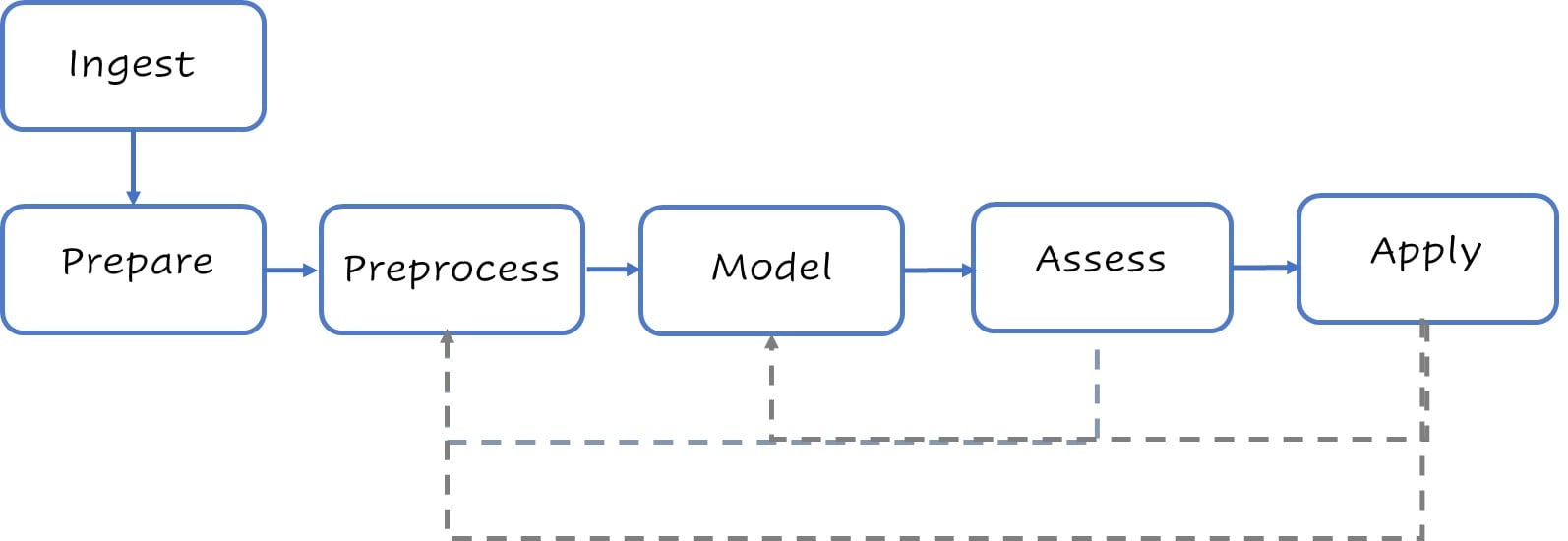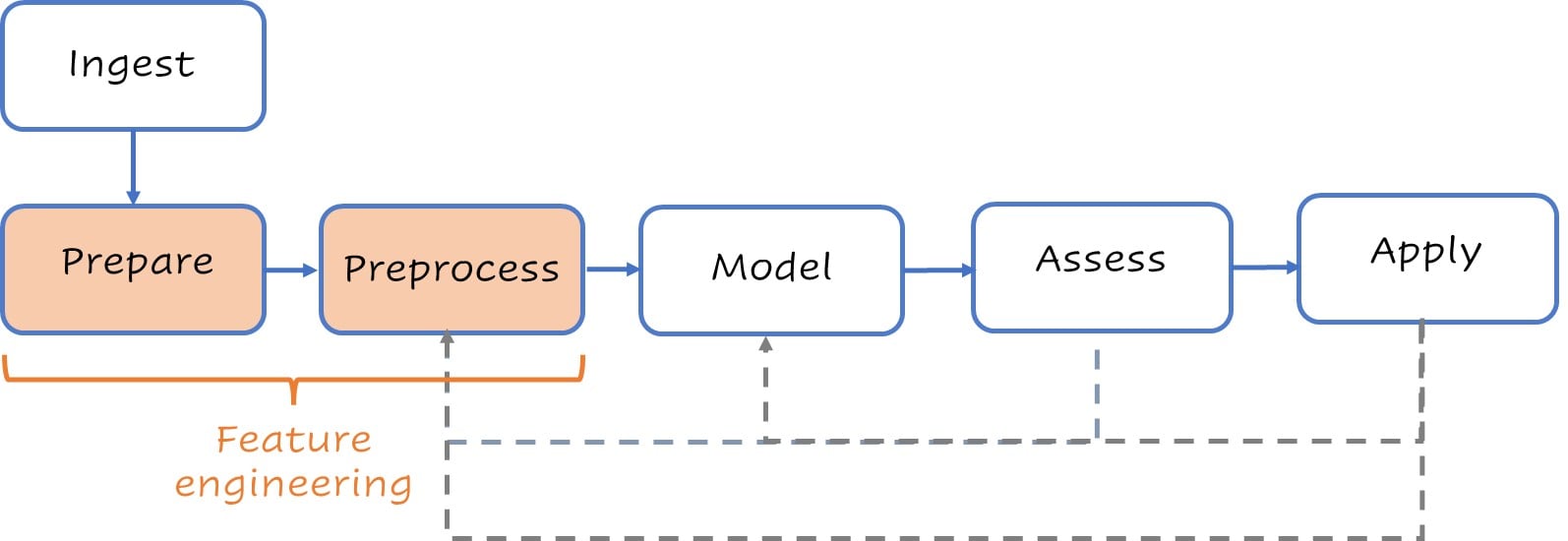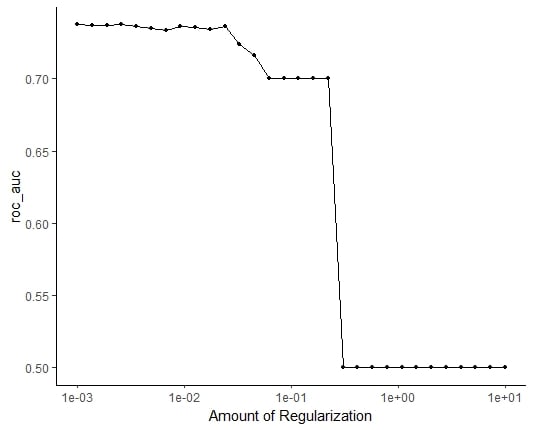Putting it all together
Feature Engineering in R

Jorge Zazueta
Research Professor. Head of the Modeling Group at the School of Economics, UASLP
A stylized process modeling flow
Typical high-level modeling steps.

A stylized process modeling flow
Typical high-level modeling steps.

Prepare
Start by doing some basic housekeeping and setting up our splits.
loans <- # Basic housekeeping
loans %>%
mutate(across(where(is_character),
as_factor)) %>%
mutate(across(Credit_History,
as_factor))
set.seed(123) # Set up splits
split <- initial_split(loans,
strata = Loan_Status)
test <- testing(split)
train <- training(split)
glimpse(train)
Rows: 460
Columns: 13
$ Loan_ID <fct> LP001003...
$ Gender <fct> Male, Ma...
$ Married <fct> Yes, No,...
$ Dependents <fct> 1, 0, 0,...
$ Education <fct> Graduate...
$ Self_Employed <fct> No, No, ...
$ ApplicantIncome <dbl> 4583, 18...
$ CoapplicantIncome <dbl> 1508, 28...
$ LoanAmount <dbl> 128, 114...
$ Loan_Amount_Term <dbl> 360, 360...
$ Credit_History <fct> 1, 1, 0,...
$ Property_Area <fct> Rural, R...
$ Loan_Status <fct> N, N, N,...
Preprocess
Our recipe can be quite short or very complex.
recipe <- recipe(Loan_Status ~ .,
data = train) %>%
update_role(Loan_ID,
new_role = "ID") %>%
step_normalize(all_numeric_predictors()) %>%
step_impute_knn(all_predictors()) %>%
step_dummy(all_nominal_predictors())
recipe
Recipe
Inputs:
role #variables
ID 1
outcome 1
predictor 11
Operations:
Centering and scaling for all_numeric_predictors()
K-nearest neighbor imputation for all_predictors()
Dummy variables from all_nominal_predictors()
Model
Set up workflow
lr_model <- logistic_reg() %>%
set_engine("glmnet") %>%
set_args(mixture = 1, penalty = tune())
lr_penalty_grid <- grid_regular(
penalty(range = c(-3, 1)),
levels = 30)
lr_workflow <-
workflow() %>%
add_model(lr_model) %>%
add_recipe(recipe)
lr_workflow
--Workflow -------------------------------
Preprocessor: Recipe
Model: logistic_reg()
-- Preprocessor --------------------------
3 Recipe Steps
- step_normalize()
- step_impute_knn()
- step_dummy()
-- Model ---------------------------------
Logistic Regression Model Specification (classification)
Main Arguments:
penalty = tune()
mixture = 1
Computational engine: glmnet
Assess
Tune penalty for Lasso
lr_tune_output <- tune_grid(
lr_workflow,
resamples = vfold_cv(train, v = 5),
metrics = metric_set(roc_auc),
grid = penalty_grid)
autoplot(tune_output)
ROC_AUC vs. Regularization

Assess
Fitting the final model
best_penalty <-
select_by_one_std_err(lr_tune_output,
metric = 'roc_auc', desc(penalty))
lr_final_fit<-
finalize_workflow(lr_workflow, best_penalty) %>%
fit(data = train)
lr_final_fit %>%
augment(test) %>%
class_evaluate(truth = Loan_Status,
estimate = .pred_class,
.pred_Y)
Our performance metrics
# A tibble: 2 × 3
.metric .estimator .estimate
<chr> <chr> <dbl>
1 accuracy binary 0.818
2 roc_auc binary 0.813
Let's practice!
Feature Engineering in R

